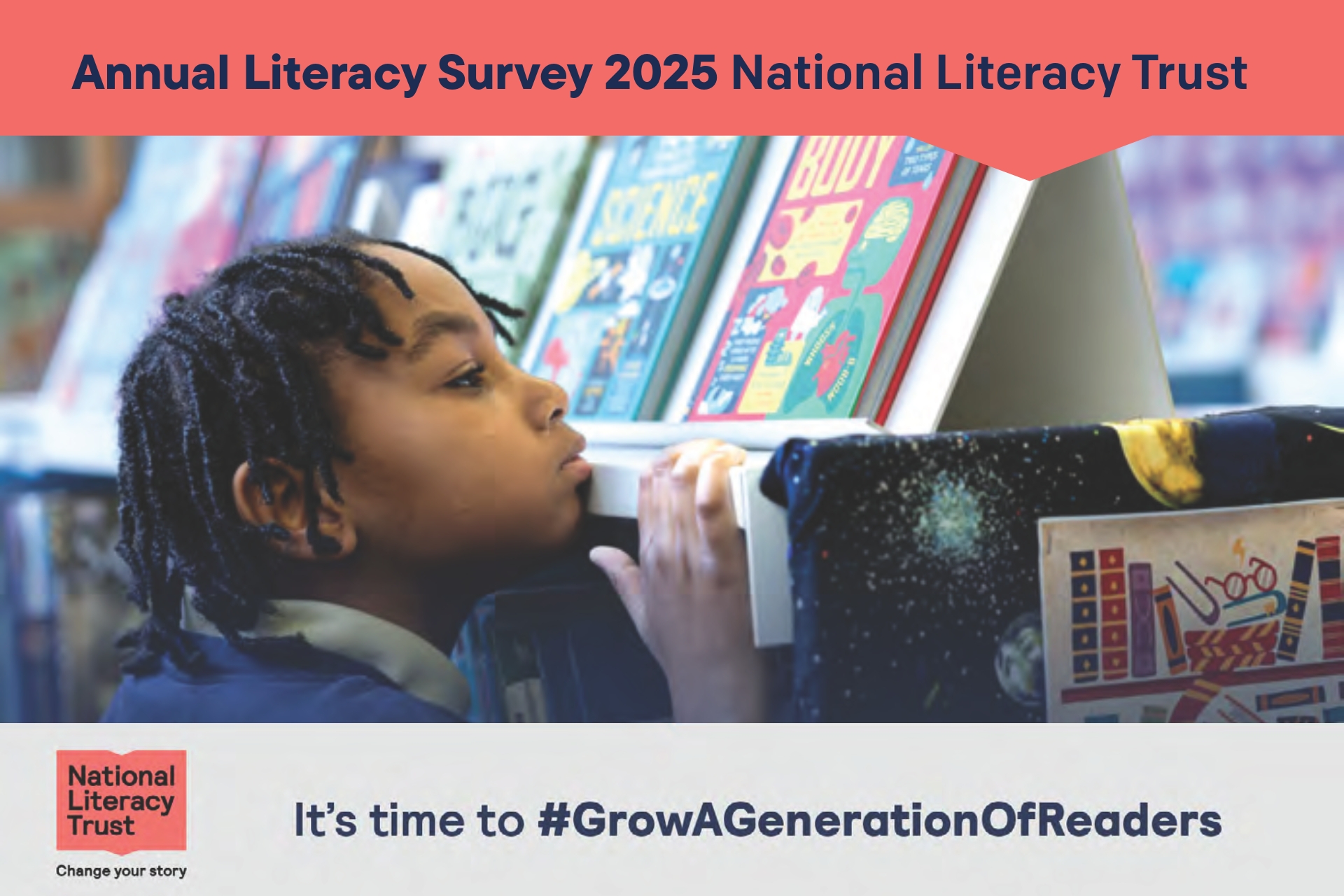New figures in the Annual Literacy Survey 2025 reveal a generation disengaging from books.
Reading for pleasure among children and young people in the UK has dropped to its lowest level since records began, according to the National Literacy Trust’s 2025 report. Based on responses from nearly 115,000 pupils aged 5 to 18, the data paints a stark picture of long-term decline and widening disparities in reading habits. Despite the deeply concerning numbers, the motications of 8- to 18-year olds offer a window into what might re-engage those with the lowest levels of enjoyment.
Key Findings:
Only 1 in 3 (32.7%) children aged 8 to 18 say they enjoy reading “very much” or “quite a lot” — a 36% drop since 2005.
Enjoyment has fallen across all age groups, with a particularly sharp decline among primary-aged children and teenage boys.
Daily reading is also at a record low: just 18.7% of children aged 8 to 18 read something every day in their free time — down 51% from 2005.
For 5- to 8-year-olds, 62.6% say they enjoy reading, and 44.5% read daily — still higher than older peers, but also in decline.

Gender and age gaps are growing: girls (39.1%) are more likely to enjoy reading than boys (25.7%), and enjoyment steadily declines through adolescence.
Children eligible for free school meals continue to read less frequently, with daily reading falling to 15.8% among this group, compared to 19.4% for non-FSM peers.
Motivations and Media:
Children who read — even those who say they don’t enjoy it — are often driven by a desire to learn new things or new words, suggesting “curious” motivations dominate over emotional or social reasons.
While girls read more for well-being and emotional support, more boys leaned towards reading to connect with causes or the wider world. Reading to build knowledge was equally strong across bother genders.
Media tie-ins are crucial: 38.1% say they’re more likely to read something linked to a film or TV series they enjoy.
Song lyrics, comics, fan fiction, and news articles are popular choices, especially on screen, while fiction and factual books remain dominant in print.
In 2025, half (49.3%) of children and young people still read fiction or short stories in print each month, with two in five (40.1%) reading non-fiction books. Comics and graphic novels (29.2%) and magazines (21.3%) also remain popular choices in this format.
Implications:
The data signals a serious erosion of reading culture among the young, with potentially lasting effects on literacy, wellbeing, and educational equity. The report warns that strategies to reverse the trend must focus on autonomy, relevance, and connection to children’s existing interests and digital environments, rather than relying on traditional or school-led models alone.
This generational decline comes amid similar global concerns, with England and Northern Ireland now below the international average in reading enjoyment according to PIRLS benchmarks. The report underscores the urgency of intervention — before the habit and joy of reading disappear altogether.



Comments (0)
Leave A Reply
You must be logged in to post a comment.